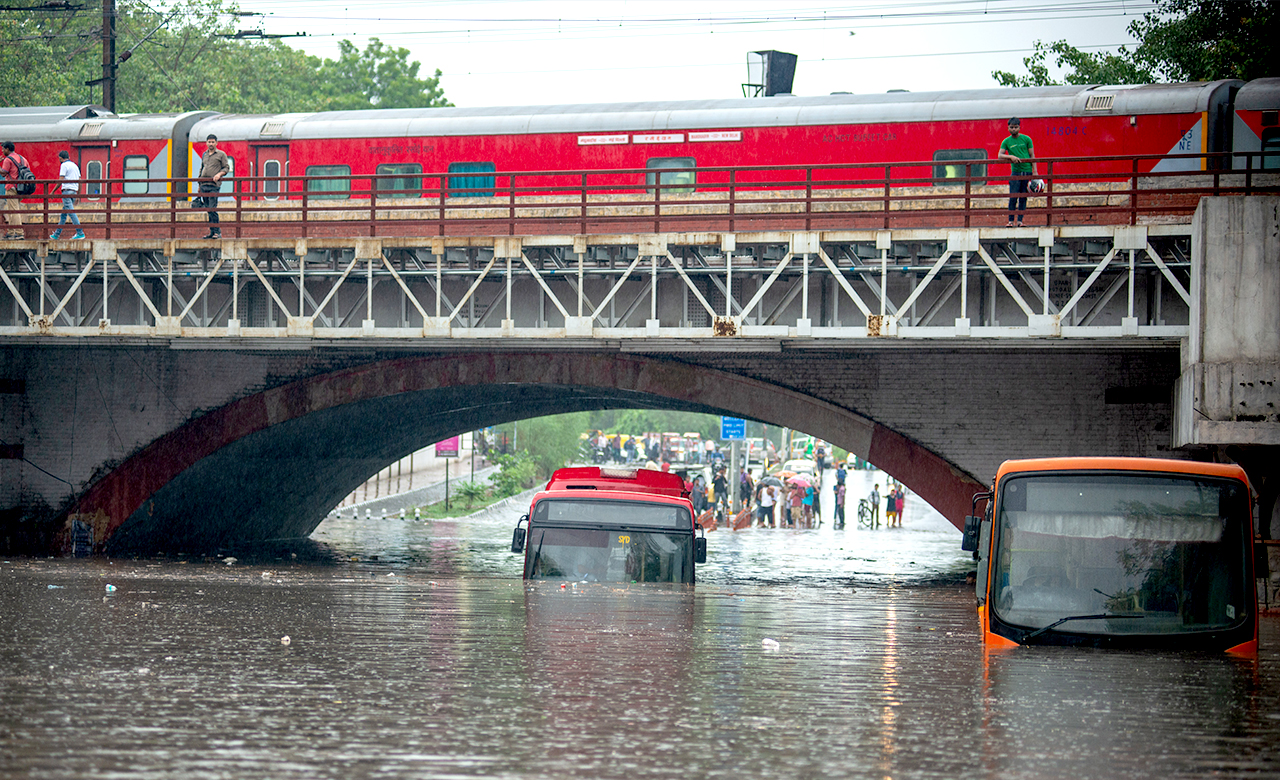
From January 1 to September 30, 2022, out of 273 days, 242 days have seen natural calamities in the country. So in these nine months, almost every day, India has faced a natural calamity, and more than 88 percent times, extreme weather events have occurred in some regions of the country[1]!
During the monsoon period, these disasters arise predominantly from climate-related hazards. Heavy rainfall often brings widespread flooding, while landslides result in huge losses of life and property across the country.
Recent Events
July 2023 brought with itself record rainfall (between the 8th and 9th of July 2023) in North India. Intense rain caused widespread chaos, including overflowing rivers, mountain landslides, and waterlogged plains. This resulted in flooding around low-lying areas near Yamuna River in Delhi and landslides in Himachal Pradesh and Uttarakhand. RMSI, in its multiple advisories[2] for the event, had already highlighted the potential impact of the rainfall in North India. The capital city of Delhi witnessed the Yamuna River rising to a record-breaking 208.66 meters and staying there for more than two days. The raging waters caused massive damage to property, lives lost, and business interruption.

In another incident from 2017, floods due to torrential rains caused major floods in Gujarat, and the runways of the Ahmedabad airport were damaged.
Another major flash flood event in June 2013 in Uttarakhand completely submerged the powerhouse and caused the accumulation of a great deal of muck and debris in the dam reservoir.

Unfortunately, such extreme weather events have become a common problem in India over the past decade, as climate scientists have been warning us. This forces us to delve a bit deeper to understand how we can safeguard ourselves and our business from such impacts of Climate Change.
Business Perspective
With extreme weather events increasing in severity and intensity, businesses are unprepared to cope with nature’s impacts.
This changing scenario and the global weather extremities make it essential for businesses to implement climate change strategies to strengthen their assets.
How can impact forecasting platforms be the solution?
To safeguard against physical risk, advance information about hazards and the potential damage they can cause to our assets can be of great value. A scientific way to understand the risk of any hazard is by modeling its impact and translating it to the potential risk at the location.

This modeling is made possible through Impact Forecasting systems which translate the hazard information into impact on an asset of interest. These technology-based systems are now a vital investment to protect lives, properties, and the economy. The forecasting system for impacts offers estimates on the potential amount and distribution of physical damage, impact on humans, service disruptions, and financial losses. This information can help decision-makers make informed decisions about emergency measures and bring different disciplines together to focus on a common target.
How do these platforms help a business?
The tool provides a bird’s eye view of the scenarios on various resilience factors. It is based on a model that calculates asset and well-being losses for multiple hazards such as floods, landslides, tsunamis, earthquakes, and windstorms. The system utilizes advanced hazard models to provide an estimation of potential risks posed to an area, allowing stakeholders to receive early alerts about potential hazards 2-3 days in advance. It enables them to take the necessary measures to mitigate the risks and safeguard their exposure to potential threats. Additionally, a graphical visualization is provided to offer a clear representation of the impact of the hazards.

How does the Impact Forecasting system help different stakeholders
Governments and private companies are taking preemptive action against potential hazard events. As per RMSI’s Impact Forecasting system, the estimated exposure at risk from Cyclone Biparjoy in Gujarat alone was around INR 1,000 crore. With the Cyclone’s impact on the interior regions of Rajasthan, the number of consolidated exposure at risk would have been manifold. With the early warning information available to the administration, the loss of life from this event was controlled by evacuating close to 1 lakh people to safe areas.
RMSI is helping businesses and Governments around the globe today by providing them with advanced information about the impact of the impending hazard. Although some organizations also have a dedicated Disaster Response Team, an advance alert for the hazard from an Impact Forecasting System is a critical input to activate these teams.
The availability of actionable insights about an impending hazard, up to 3 days in advance, helps the relevant stakeholders plan mitigation measures and perform preventive maintenance on critical assets such as Power back up, moving low-lying stock to higher levels, Telecom Towers, Electricity Poles, and so on. Proper mitigation plans help minimize the upfront economic losses and reduce the Business Interruption Losses caused due to non-availability of factors of production during such events.
We have successfully implemented this solution for various industries in e-commerce, fertilizers, steel, consumer goods manufacturing, pharmaceuticals, telecom infrastructure network, and insurance, helping them plan mitigation measures for impending hazards.
One of the recent implementations was for a manufacturing firm with multiple locations spread across industrial zones in India. These industrial zone areas are always at risk of flooding during intense rainfall. Our Impact Forecasting system evaluates the possibility of floods at a location level. It sends an advisory to the client’s central control room and the heads of respective plants before any potential flood event 3 days in advance. The client acts on the advice provided and takes proactive measures to safeguard their valuable stock and equipment, effectively mitigating the risk of financial loss and minimizing potential disruptions to their operations.
Conclusion
The intervention of these platforms will pave the way for industries to safeguard their assets against increasing weather-induced events in a more scientific manner.
In my next blog, I will talk about other climate change parameters. Stay tuned to learn more about such risks.
[1] https://timesofindia.indiatimes.com/readersblog/sahil-razvii/india-has-faced-natural-disaster-every-day-in-the-last-nine-months-report-46435/
[2] https://www.linkedin.com/feed/update/urn:li:activity:7085131127283200000